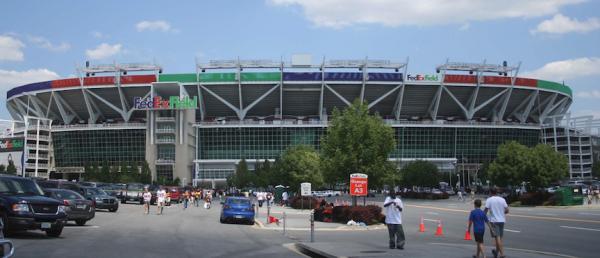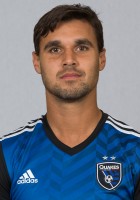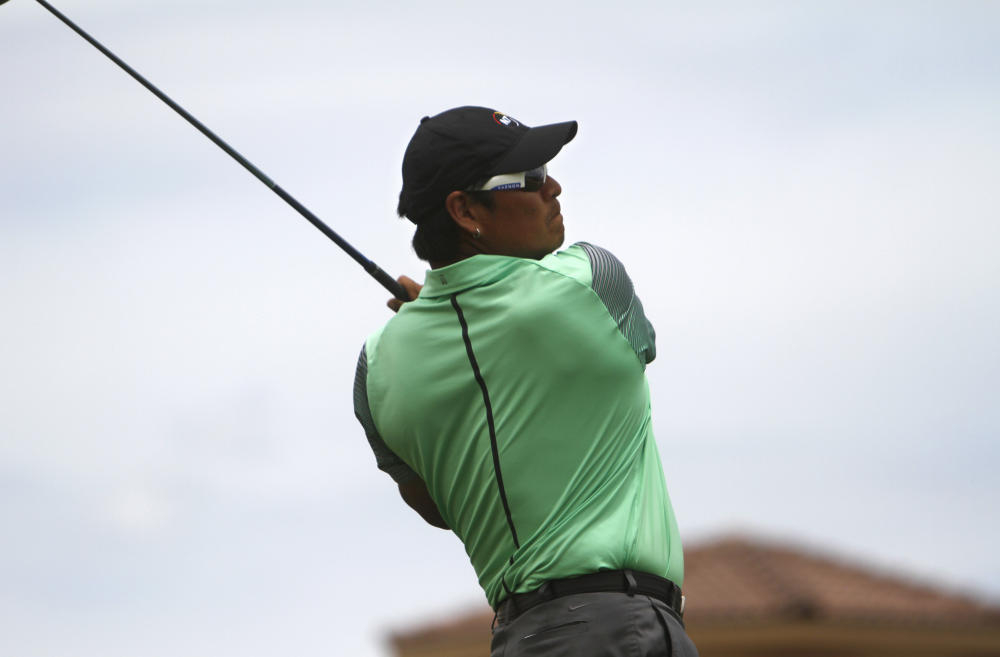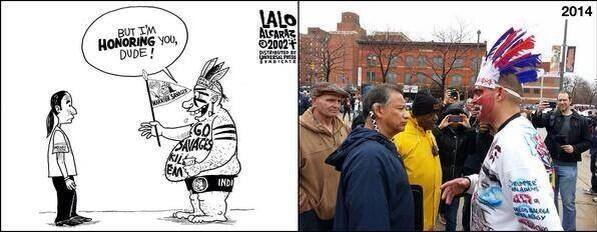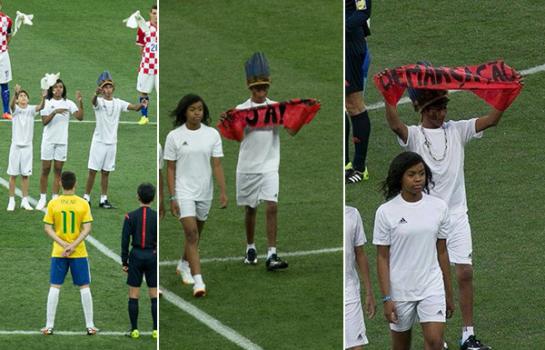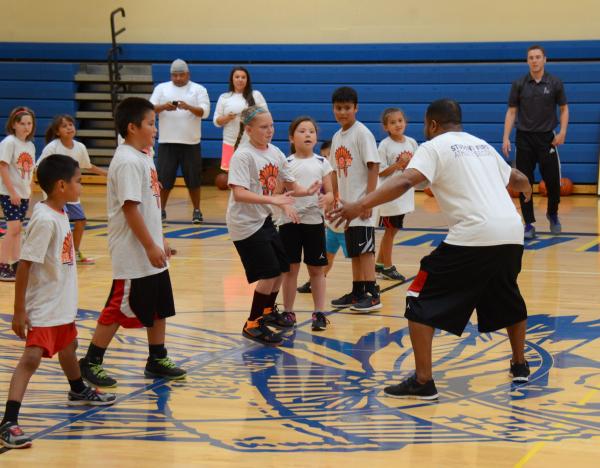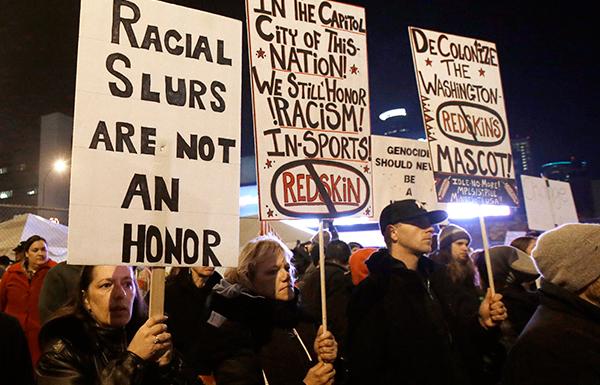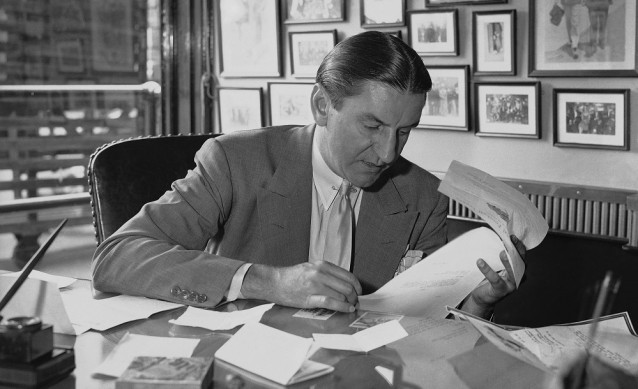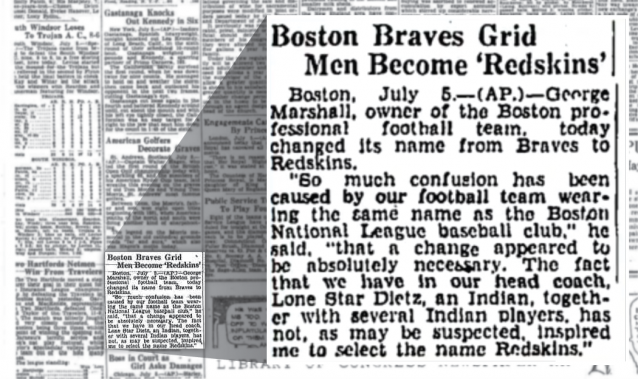On Tuesday, the National Congress of American Indians sent a letter to FedEx CEO Fredrick W. Smith encouraging him to dissolve his company’s relationship with the Washington Redskins on the grounds that the team name is pejorative and that by using it the team continues to honor the legacy of a segregationist.
“We are asking for you to help us stop Washington’s NFL football team from using FedEx’s name to endorse a dictionary-defined racial slur and promoting the legacy of the infamous segregationist who decided to use this slur to brand the team,” the letter reads. “At FedEx field, your company is allowing its iconic brand to be used as a platform to promote the R-word – a racist epithet that was screamed at Native Americans as they were dragged at gunpoint off their lands.”,
The “infamous segregationist” mentioned in the letter is former team owner George Preston Marshall, who is remembered for his long refusal to include African Americans on his team’s roster. The lower level of FedEx field is named for Mr. Marshall.
The letter, signed by representatives of the Oneida Indian Nation and United Church of Christ, was sent to Smith after the U.S. patent office declared last week the team name is “disparaging to Native Americans” and cancelled six of its federally protected trademarks.
Following that landmark decision, individual Native Americans and former Federal Communication Commission officials are again calling on the FCC to reconsider the use of the name during broadcasts.
In a letter sent to Snyder earlier this year, former FCC Chairman Reed Hundt, former Commissioners Jonathan Adelstein and Nicholas Johnson argue that an indecency case could be made against broadcasters who air the disparaging word on the air, Politico reported.
“It is impermissible under law that the FCC would condone, or that broadcasters would use, obscene pornographic language on live television,” the letter, obtained by Politico, reads. “This medium uses government owned airwaves in exchange for an understanding that it will promote the public interest. Similarly, it is inappropriate for broadcasters to use racial epithets as part of normal, everyday reporting.”
Hundt spoke to Indian Country Today Media Network and said that the FCC should reevaluate whether or not Snyder is “fit” to have licenses from the FCC. By “fit,” Hundt said he means “a person of appropriate character.”
“The FCC should consider whether Mr. Snyder is fit to own radio station licenses given that he uses radio stations to broadcast an ethnic slur,” he said. “These licenses are owned by the public and they are given to individuals for the purpose of serving the public interest. The FCC does not give radio station licenses to felons; it doesn’t give radio station licenses to people of bad character. Historically, [the FCC] has been reluctant to give broadcast licenses to people who advocate racially intolerant positions.”
Hundt added that it’ll take financial pressure for Snyder to change the team name and that Native Americans should petition the FCC to reconsider the use of the slur on broadcast radio and television.
“Unfortunately the team owner has been completely deaf to the public opinion – that he should get a new name for the team,” he said. “And the only way to get the team renamed is to inflict economic impact on Mr. Snyder. This is sad, but true. Therefore it’s a very good idea to ask that [FedEx] publically state that they don’t want their name on the stadium, associated with this derogatory racial slur. Only if money talks will [Snyder] walk away from the name.”
Native Americans have already begun efforts against FedEx’s association with Snyder and the Washington team.
Jacqueline Keeler, Navajo and Yankton Dakota writer and activist, launched a campaign on Change.org to encourage consumers to boycott FedEx until Smith divests from the team. The petition – aptly titled, “Pledge to Stop Using FedEx While They Still Quietly Support Washington ‘Redskins’ Shameful Mascot” – asks individuals not to patronize FedEx while it remains associated with the team.
“The idea that a company as large and ubiquitous as FedEx could support an overt slur of Native people and not experience any negative side effects shows how marginalized Native people are in this country,” Keeler wrote in a message to ICTMN. “This company would never become part owner in a team that bore the name of an offensive ethnic slur of any other group in this country.”
Smith, who is a shareholder of the Washington team, told CNBC host Kelly Evans that he doesn’t have a dog in the fight and was mum when asked if Snyder should change the team name.
“Well, first of all, let me answer that question from the standpoint of FedEx, which sponsors FedEx Field,” Smith said, according to USA TODAY. “We have a long-standing contract with Washington Football, Inc. The Redskins play at FedEx Field, but there are many, many other events there — the Rolling Stones, Notre Dame, Army and Navy football, Kenny Chesney. So that’s our sponsorship, and we really don’t have any dog in this issue from a standpoint of FedEx. From a personal standpoint, I’m a shareowner in the Redskins football team, but Mr. Snyder – who’s the majority owner – and the Redskins speak for the franchise,” he said.
Read more at http://indiancountrytodaymedianetwork.com/2014/06/27/ncai-former-fcc-commissioners-call-fedex-cut-ties-redskins-155520?page=0%2C1

